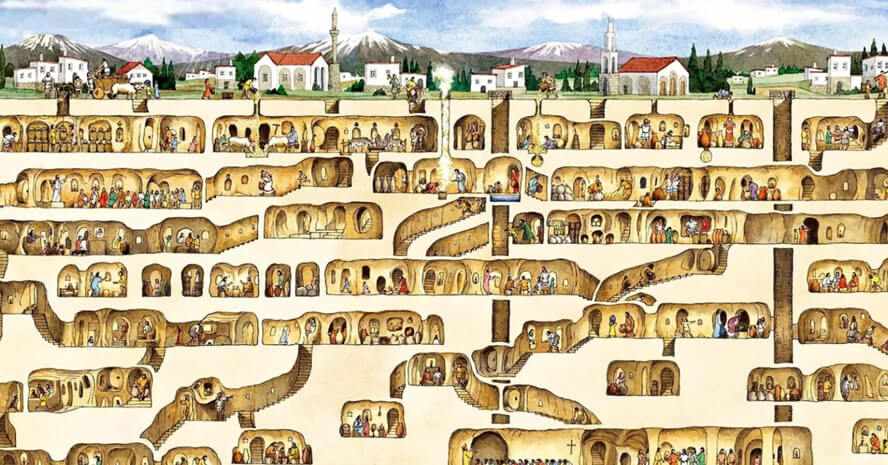For centuries, myths and folklore from nearly every corner of the world have hinted at something extraordinary beneath our feet. Stories about caves and burial chambers, vast underground cities, advanced civilizations, and realms as rich and complex as anything on the surface.
What if these myths weren’t all merely symbolic? What if they were preserving memories of something real—something history has largely forgotten? Within the last 60 years or so we have just uncovered incredibly intricate underground cities like Derinkuyu in Turkey. For the past century, Governments across the world have engaged in an underground arms race of sorts, boring deep into the Earth to build secure tunnel systems and facilities that could withstand a nuclear blast, conduct private military operations, and more. How much more is there still to find? How deep does this go?
Plato, Tartarus, and a Lost Underground World
One of the earliest detailed accounts of a subterranean world comes from Plato (c. 427 – 347 BC), who—beyond his famous accounts of Atlantis—described a vast underworld system in his dialogue Phaedo. He wrote of deep rivers, immense caverns, and a place known as Tartarus—a massive cavity at the Earth’s core where underground waterways flowed in and out, connecting to the surface oceans.
Unlike the later Christian idea of Hell, Tartarus wasn’t just a place of punishment; it was a fully realized world, filled with its own geography, laws, and inhabitants. Some interpretations even suggest that Tartarus was home to beings that retreated underground after catastrophic events on the surface.

The Greek and Roman Obsession with the Underworld
Plato wasn’t the only ancient thinker to describe an underworld as a real place.
- Homer’s Odyssey describes the hero Odysseus physically traveling to the land of the dead—not as a metaphor, but as a tangible location that could be entered.
- The Roman poet Virgil, in the Aeneid, detailed a trip to the underworld through a cave near Naples. He describes a bustling subterranean city with its own rules, courts, and different districts for different types of souls—almost like an underground version of the Roman Empire.
- The Greek historian Xenophon and the geographer Strabo both mention underground dwellings as real places, particularly in Armenia and North Africa, where entire societies were said to have lived beneath the Earth’s surface.
Are these just myths, or part of recorded history?
The Norse Nine Realms and the Subterranean World
In Norse mythology, the universe was divided into nine realms, several of which were located beneath the surface.
- Niflheim, one of the primordial realms, was a world of ice and mist believed to exist deep underground.
- Svartálfaheimr, the home of the dwarves (or dark elves), was another subterranean realm. These dwarves weren’t just minor figures in Norse lore—they were depicted as master craftsmen who forged powerful weapons, like Thor’s hammer Mjölnir and Odin’s spear Gungnir.
- Mimir’s Well, located beneath the roots of Yggdrasil (the World Tree), was said to contain boundless wisdom, and Odin himself sacrificed an eye to drink from it.
In this mythology, underground realms weren’t just places of death or exile—they were places of power, wisdom, and advanced knowledge.
The Tuatha Dé Danann and the Underground Gods of Ireland
Ireland, too, has deep-rooted myths of subterranean civilizations. The Tuatha Dé Danann, the legendary race that ruled Ireland before the arrival of the Celts, were said to be beings of immense power and knowledge. After losing their dominion on the surface, they supposedly retreated underground, becoming the Aos Sí—the “people of the mounds,” or the fairy folk.
Many ancient passage tombs and underground structures in Ireland, such as Newgrange, are linked to these legends. Even today, Irish folklore is filled with stories of hidden entrances to their underground realm.
Hindu Cosmology and the Naga Cities
In Hindu mythology, there exists an entire subterranean realm known as Patala, inhabited by the Naga, a race of highly advanced serpent-like beings.
- The Naga, a divine, or semi-divine, race of half-human, half-serpent beings that reside in the netherworld (Patala), and can occasionally take human or part-human form, or are so depicted in art, are also depicted as having immense technological and spiritual knowledge.
- Their underground cities were described as filled with jewels, powered by unknown energies, and illuminated by their own radiant glow—almost suggesting an advanced energy source beyond human understanding.
- The Bhagavata Purana describes the seven lower realms of existence beneath the Earth, which some believe could be real underground civilizations rather than just spiritual metaphors.
The parallels between Patala, Agartha, and Shambhala—all legendary underground cities—raises that interesting question again: Were these merely mythological, or did ancient cultures preserve fragmented memories of real lost civilizations?
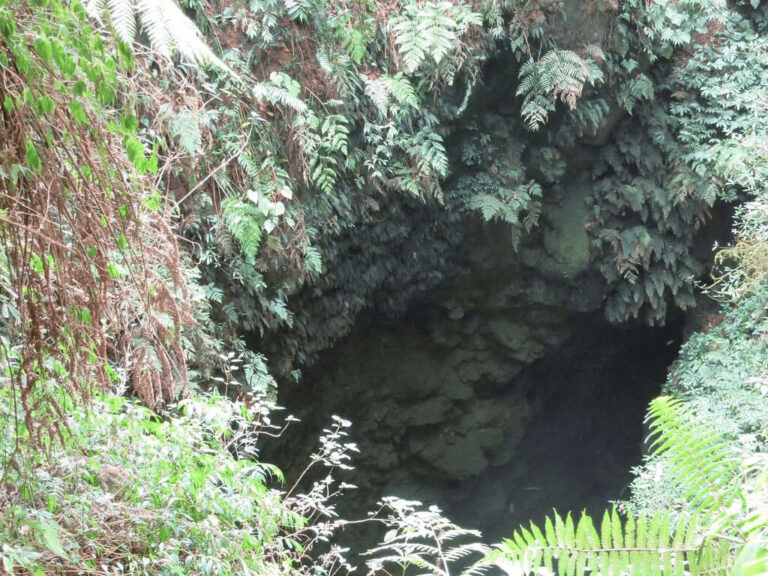
The Mayan Underworld: Xibalba
In Mayan mythology, the underworld—Xibalba—wasn’t just a realm of the dead. It was a physical place that heroes could journey to and return from.
- Ancient Mayan sites like Chichén Itzá and Teotihuacán feature massive underground tunnels that researchers are still uncovering.
- The sacred cenotes (sinkholes) of the Yucatán Peninsula were believed to be entrances to this underworld.
Some theories suggest that the elaborate Mayan cave systems could be remnants of an underground civilization that once thrived.
The Sumerian Underworld and Initiation Rites
Even the Sumerians, one of the world’s oldest recorded civilizations, described an underground domain called Kur.
- The myth of Inanna’s descent into the underworld tells how the goddess had to pass through seven gates, surrendering a piece of her identity at each one.
What Were These Civilizations Hiding From?
If so many cultures worldwide preserved myths about advanced civilizations retreating underground, it raises a bigger question: Why?
- Were they escaping natural disasters, like floods or asteroid impacts?
- Were they defending themselves from war or invasion?
- Could they have been using underground spaces as safe havens for knowledge and technology?
If any of these stories hold historical truth, it is an interesting thought that we may still be able to find evidence that draws a stronger correlation between the two. While research is still ongoing for the Younger Dryas Impact Hypothesis and a potential cataclysmic comet event around the end of the last Ice Age about 12,900 years ago, it is a compelling theory that would explain a lot of this ancient human activity if determined to be true.
While there is some evidence that’s been uncovered like nano-diamonds and other markers in the geologic record, it has not been definitively proven, and some scientists argue that other factors, like volcanic activity, could have caused the cooling.
If you want to entertain the possibility that even earlier humans a very long time ago were living underground in order to survive, the Laschamp excursion or Adams Event happened about 42,000 years ago, which was the magnetic field on Earth temporarily being reversed. It is theorized that the field was only about 5% of its current strength during that 200-400 year period.
That would mean there was essentially no ozone layer to protect life on Earth from solar radiation. We still don’t know the extent and intensity this had on life or exactly how cold it got, but it also may have caused temperatures to plummet, even further than they were during the Ice Age already. It also may have disrupted animals’ internal magnetic sense or internal compass, confusing them from their migration patterns. This hypothesis is still being researched, but it’s safe to say that if life on the surface was unbearable, you’d aim to seek shelter underground.
Many of these ancient underground dwellings may have already been flooded or collapsed and any evidence has long been destroyed. Others were likely in locations that now have a city built overtop of it, rendering the space inaccessible. Throughout history, civilizations have restored and renovated previous civilization’s ruins, building their structures on top of an ancient foundation.
A perfect example is Baalbek. Likely, the Phoenicians (1500 – 300 BCE) were the first to extensively build upon the region of Baalbek, though very little is known still. It is unknown for certain whether the Phoenicians were the first to build, or if there was a prior civilization. The Romans conquered Baalbek (modern day Lebanon) in 64 BCE and made the region a Roman colony, known as Heliopolis. The Romans built upon and expanded the existing city of Baalbek, constructing grand temples like the Temple of Jupiter and the Temple of Bacchus, which are now considered among the most impressive Roman ruins in the world.
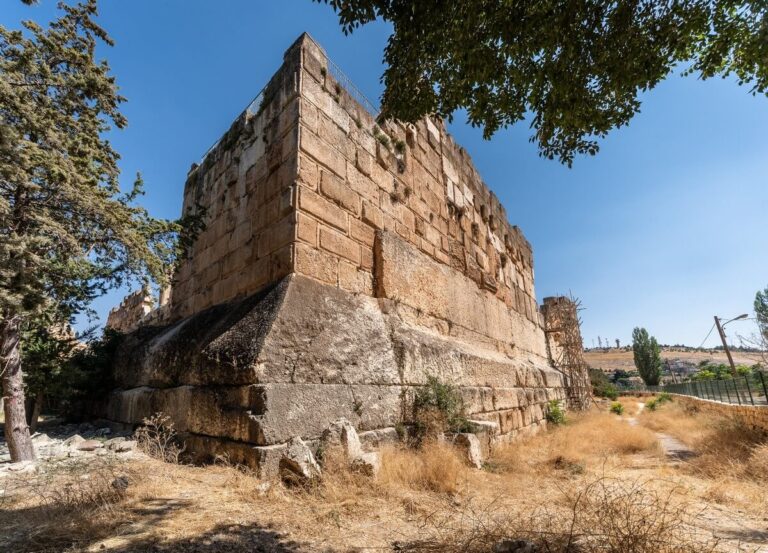
It feels like the Romans get all of the credit, but they shouldn’t. The Romans had extensively documented their technological abilities to raise stones weighing up to 80 tons. Some of the stacked megalithic blocks at Baalbek are 23 feet up in the wall and weigh 900 TONS. Yes, 900 tons, and are 14 feet tall by 62 feet long. An unknown civilization cut and raised mind bogglingly heavy stones long before the Greeks and Romans, and no one really understands how it was achieved. The fact that an earlier, more advanced civilization did stonework that’s actually more impressive than the Roman construction on top of it can’t be overlooked.
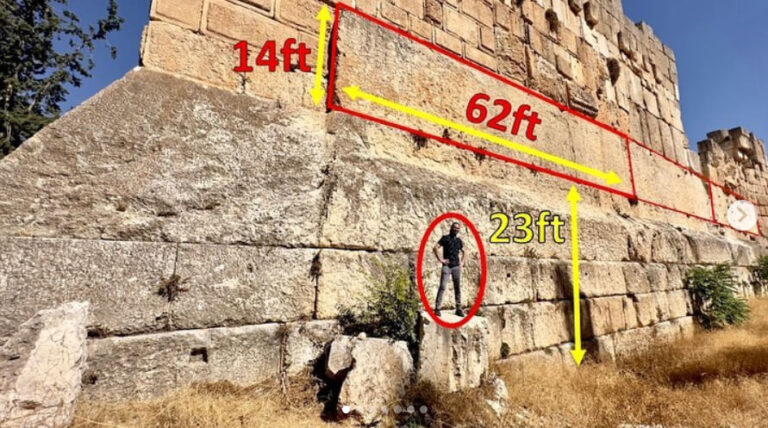
Bringing this all full circle now, what I’m getting at is what if some of the modern underground structures were built over, or rather into, existing ancient underground networks? Have any of these deep drilling projects uncovered massive caverns, or even ancient ruins? Could you imagine?
Even modern continuity-of-government bunkers, like Cheyenne Mountain and Raven Rock, are designed to protect leadership during catastrophic events. It seems ancient civilizations had essentially attempted the same.
Speaking of underground government installations, let’s look at the present day for a moment now. In modern times, governments have built their own underground networks—massive, high-tech bunkers and tunnel systems that operate in secrecy.
The Global Underground Arms Race
The idea of digging deep into the Earth for shelter, secrecy, or survival is far from new. But in the modern era, this concept took on a whole new meaning as governments have competed to build elaborate subterranean infrastructure. In the 1900s, military leaders saw underground bases as essential for national defense—especially in the event of nuclear war. What followed was an underground arms race, as countries developed high-tech methods to carve out entire cities beneath the surface.
One of the most remarkable aspects of this race was the development of tunnel boring machines (TBMs)—massive mechanical beasts capable of drilling through solid rock at incredible speeds. These machines, some dating back to the early 1900s, were surprisingly ahead of their time. While most people think of subways as the first major underground infrastructure projects, the technology behind boring tunnels for military use predates even the New York City subway system.
Some notable examples from the 1900s:
Germany (1940s-50s):
During and after WWII, the Germans developed underground factories and bunker networks like the Mittelwerk, where V-2 rockets were produced. Their early tunneling technology laid the groundwork for future underground bases.

The Germans were apparently working on a beastly TBM named the “Midgard Schlange” as a way to drive the British out of the underground, though the project was allegedly abandoned due to lack of funds before putting it into operation.
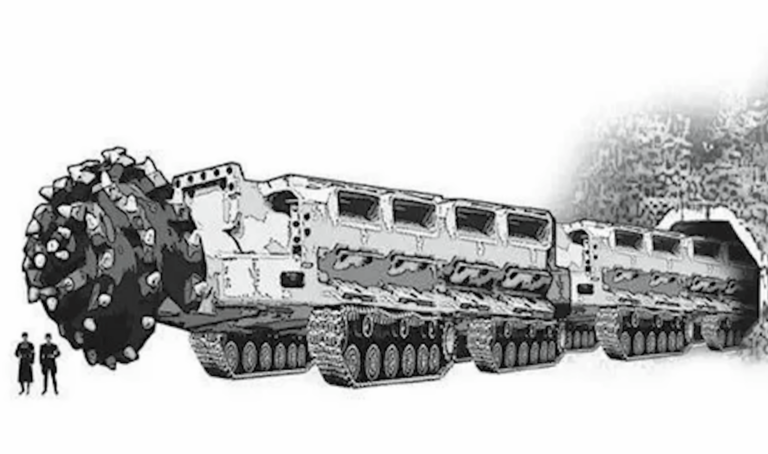
United States (1950s-60s):
As the Cold War intensified, the U.S. ramped up its underground excavation projects, developing nuclear-powered TBMs that could melt rock to carve tunnels. Reports from the 1970s suggest some of these machines were capable of drilling 7 miles a day.
Soviet Union (1960s-80s):
The Soviets built massive underground bunkers and tunnels, including the infamous Yamantau Mountain Complex in Russia, which is believed to be a sprawling subterranean city designed to withstand nuclear attacks.
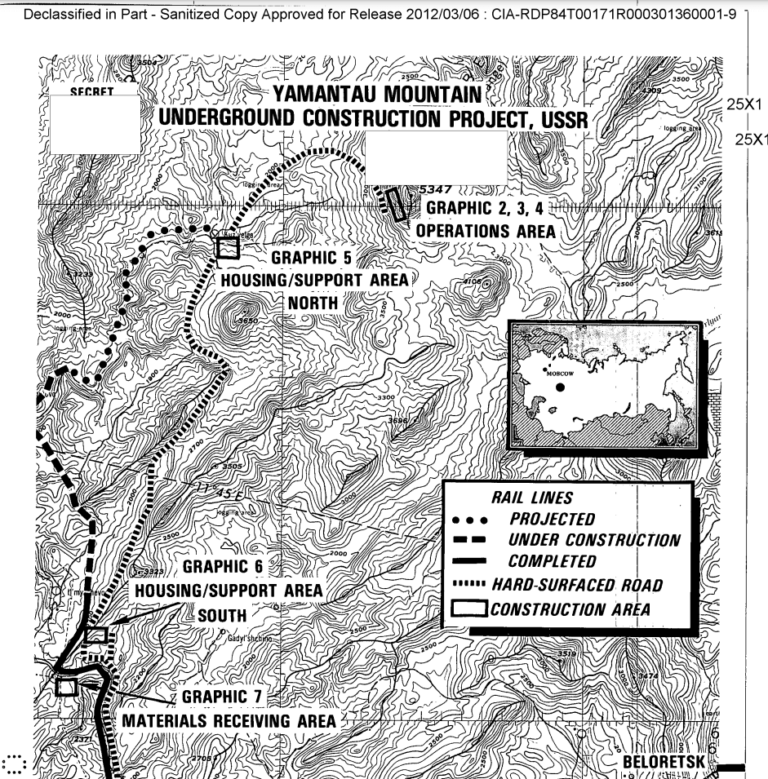
During the height of the Cold War in 1964, the Soviet Union developed an experimental nuclear-powered tunnel boring machine (TBM) known as the “Battle Mole”. Inspired by the concept of nuclear submarines, this machine was designed to operate with a compact nuclear reactor, providing it with a self-sustaining power source. Additionally, the intense heat generated by the reactor could be harnessed to aid in melting and cutting through rock as it burrowed underground.
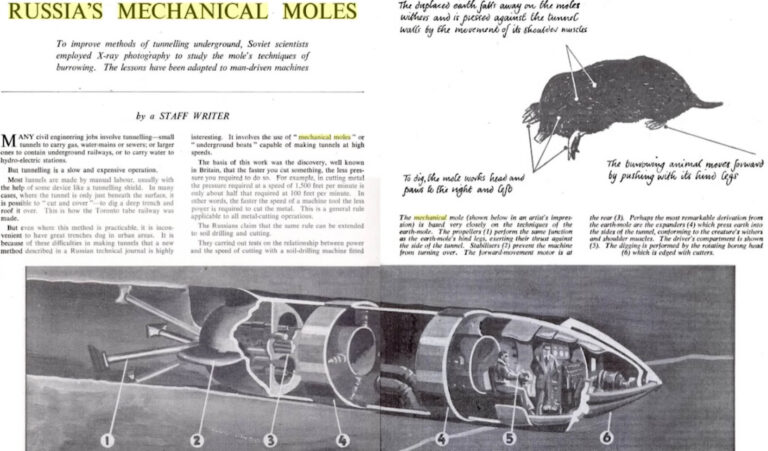
Due to the secrecy surrounding military projects at the time, much of what is known about the Battle Mole comes from scattered reports rather than official records. Some accounts suggest that prototypes were constructed and tested in various geological conditions. Trials conducted near Moscow and the Rostov region reportedly showed promising results, but not all tests went smoothly.
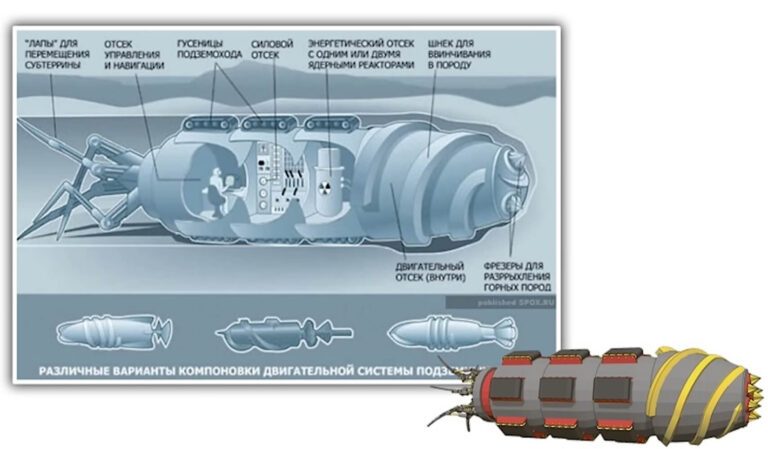
One disastrous incident allegedly occurred deep beneath the Ural Mountains, where a catastrophic malfunction led to a massive underground explosion. Given the presence of a nuclear reactor within the machine, such an event would have posed extreme dangers, likely causing radioactive contamination and structural collapse. As a result, the Soviet military is said to have abandoned the project entirely, shelving the concept of nuclear-powered TBMs—at least officially.
One of their alleged plans was to bore into the coast of California and set charges, so they would be able to detonate them and set off a series of earthquakes and tsunamis. It’s quite an unsettling thought, so hopefully that plan truly was abandoned entirely.
China (Present Day):
China’s “Underground Great Wall” is a massive tunnel system reportedly designed to house nuclear weapons, ICBMs, and high-speed transport routes, spanning thousands of miles.
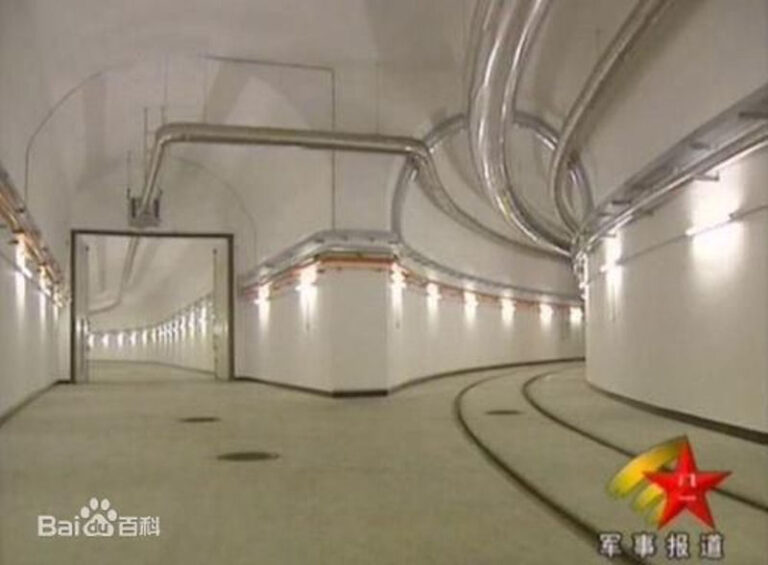
What’s fascinating is that many of these projects weren’t just isolated bunkers—they were entire underground networks, potentially mirroring the ancient myths and ruins of interconnected subterranean worlds.
It has been speculated that the United States Government DUMBs (Deep Underground Military Bases) may all be connected underground through a vast tunnel system of Maglev (magnetic levitation) trains. If this theory were true, it would mean that military and government officials could secretly move from the Pentagon to almost any military base across the country underground in a matter of hours. There are rumors of similar installations in countries all over the world.
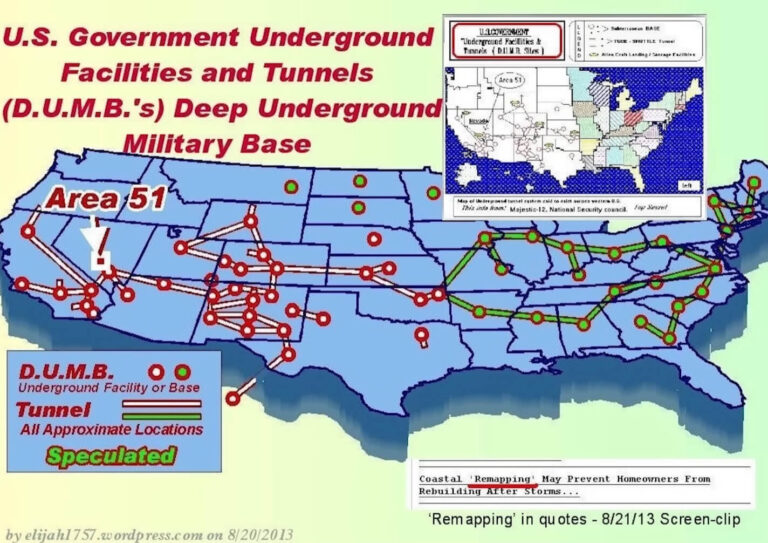
Before we continue with the Government Bases, let me show you just how far back documentation of this technology goes.
The Mysterious Origins of 19th-Century Underground Transit
The history of underground transportation might go back much further than we’re commonly taught—perhaps even into the 18th and early 19th centuries. Some of the technology developed during this era was so advanced for its time that it raises questions about what was really happening beneath our feet.

In 1799, an English inventor named George Medhurst proposed a revolutionary concept: using air pressure to move goods through cast iron tubes. By 1844, he had constructed an underground pneumatic railway station in London. To put that into perspective, while most people were still traveling by horse and carriage, engineers in London were experimenting with high-speed underground transportation.
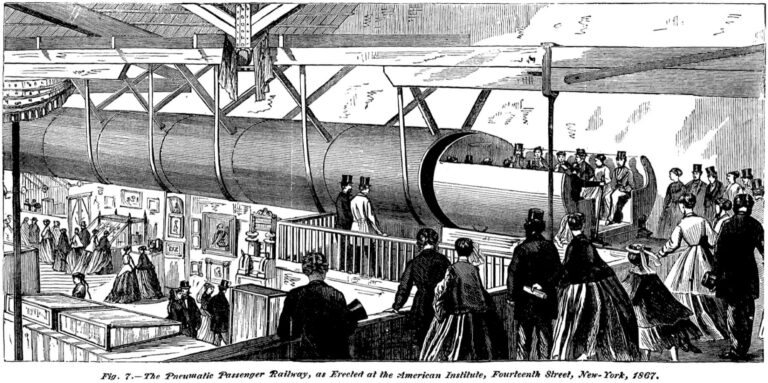
By the 1850s, cities like Dublin, London, and Paris had begun developing pneumatic railways. One of the most intriguing of these was London’s Pneumatic Dispatch System, originally designed for parcels but large enough to carry people. In 1865, even the Duke of Buckingham took a ride through it, treating it as more of a curiosity than a serious mode of transit. It’s as if engineers at the time suddenly realized, “Wait a second, we can actually fit people in this thing!”
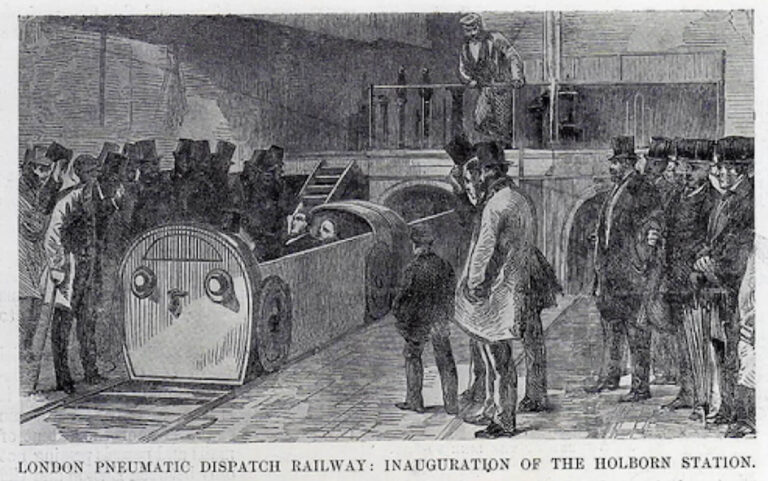
Across the Atlantic, in 1867, New York City debuted the concept of the Beach Pneumatic Transit system. Just a few years later, it was a reality. It allegedly only took about a year to dig and construct the entire system. It is said it was built between 1870 and 1871 by Alfred Ely Beach, a visionary who used a pneumatic tube system to transport passengers. The tunnel, which was about 300 feet long, was constructed beneath Broadway in Manhattan. Unlike the smaller dispatch tubes, this was a fully functioning underground passenger transit system—37 years before the official opening of the New York City Subway.
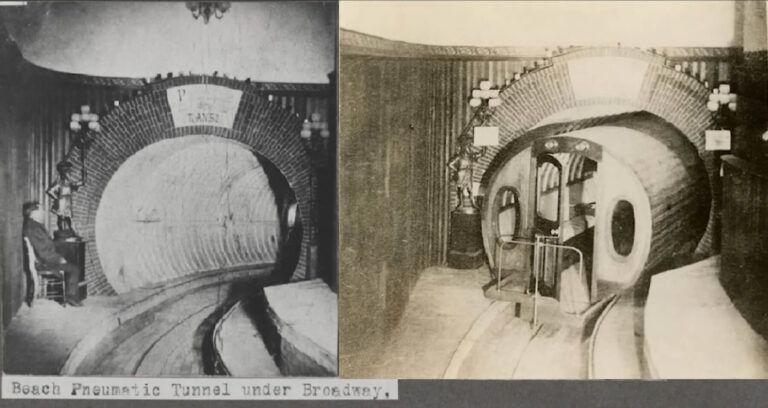
Then there’s the question of how these tunnels were supposedly built so quickly. Construction of the New York City Subway began in 1900, with the first section opening only 4 years later on October 27, 1904. The initial 9.1-mile line (constructing an average of 12,000 feet per year) ran from City Hall in Lower Manhattan to 145th Street in Harlem, with 28 stations along the route.
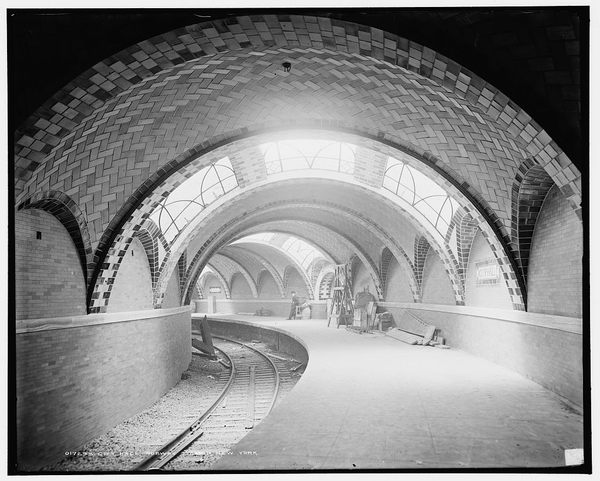
The mainstream narrative tells us they were dug by hand using basic tools like shovels, pickaxes, and wheelbarrows. But let’s put that in context: between 2013 and 2019, Seattle spent six years and millions, if not billions, of dollars to construct a single 1.7 mile tunnel (drilling about 1,500 feet per year) using modern tunnel-boring machines. But the entire underground transit networks were manually carved out in the mid-1800s with nothing more than manpower?
Granted, there are other factors than just the timeframe and length of the tunnel to compare and consider. The NYC tunnels are roughly 14 feet by 14 feet. The Seattle one is much larger, at 15 feet by 52 feet. But given the major difference between the power of a modern TBM and guys with shovels, it still seems off.
Could it be that these 19th-century engineers weren’t inventing something new, but rather reactivating or repurposing something much older? It wouldn’t be unheard of that we actually had repurposed and enhanced some kind of existing tunnels, and then took credit for it all as some kind of American Might propaganda piece. But we see examples of this all over the world, not just in the United States.
Adding to the mystery, another tunnel-boring machine (TBMs) is documented back in 1846, when an inventor named Frederick Beaumont supposedly developed one during the Second Industrial Revolution. When you compare the claimed capabilities of these early shovel and pickaxe wielding workers to what our modern tunnel boring machines can achieve, it seems like something doesn’t add up. We can table that discussion for now, but I wanted to make sure this all at least got mentioned here.
The Government’s Deep Underground Networks
While official records confirm the existence of many underground military installations, whistleblowers and declassified documents hint at something much larger. Reports suggest that these facilities might extend far deeper and serve purposes far beyond what’s publicly acknowledged.
Some of the most infamous underground government sites include:
Cheyenne Mountain Complex (Colorado, USA):
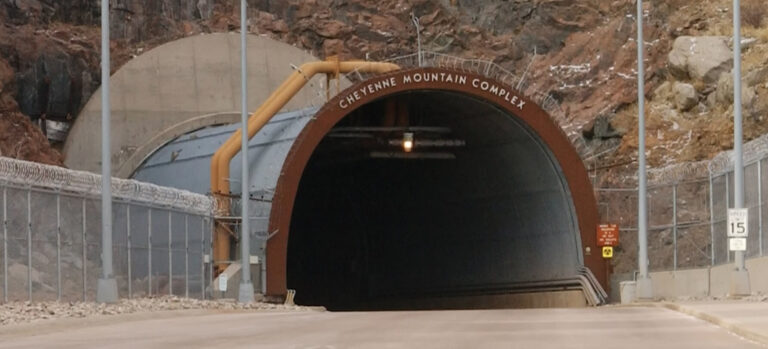
One of the most well-known military bunkers, Cheyenne Mountain is an underground fortress built into solid granite, capable of withstanding nuclear blasts. What’s intriguing is the claim that the visible portion inside that has been shown to the public is just the surface level, with hidden sections and deeper levels kept classified.

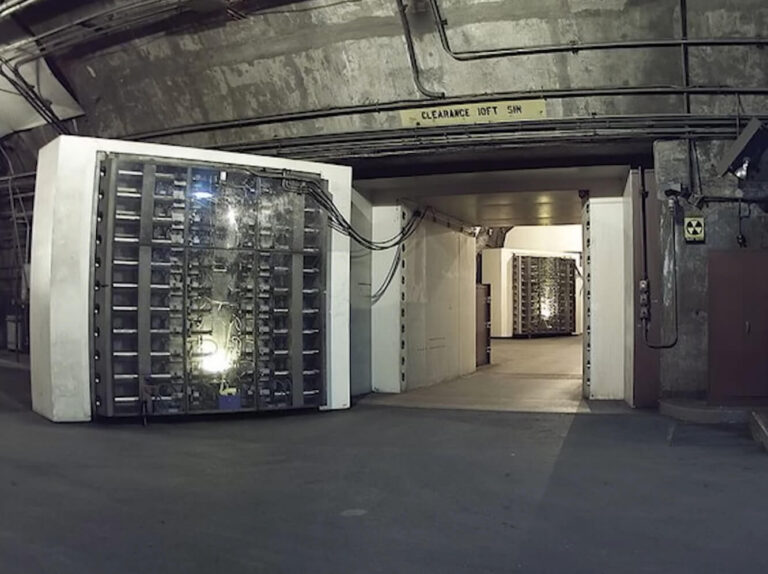
Raven Rock Mountain Complex (Pennsylvania, USA):
Known as the “Underground Pentagon,” Raven Rock is a vast subterranean installation designed to keep military operations running in case of catastrophe. Some sources suggest it has entire underground streets and buildings.
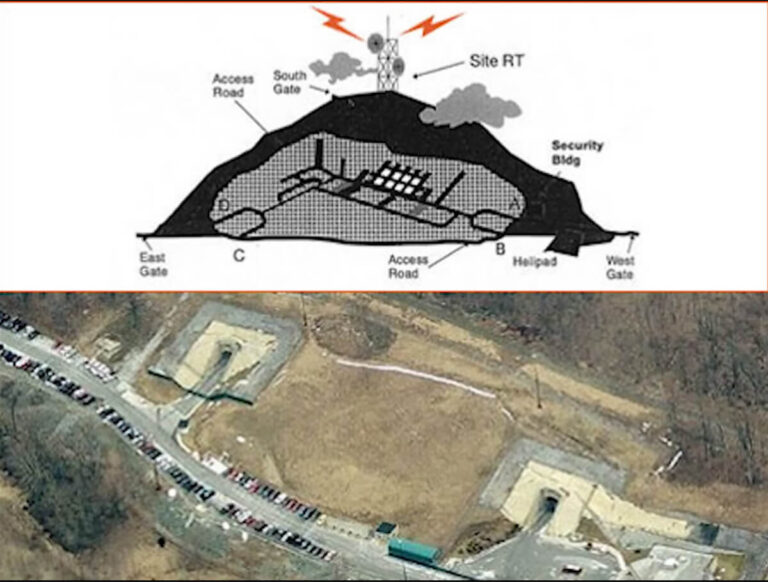
Mount Weather (Virginia, USA):
Run by FEMA, the Mount Weather facility is believed to be the ultimate continuity of government (COG) bunker. In case of a national emergency, U.S. leadership would reportedly relocate here. But what’s even more mysterious is speculation that a shadow government may already operate from these underground sites. I’m not saying it’s true, but pointing out that there is a lot of chatter about this.
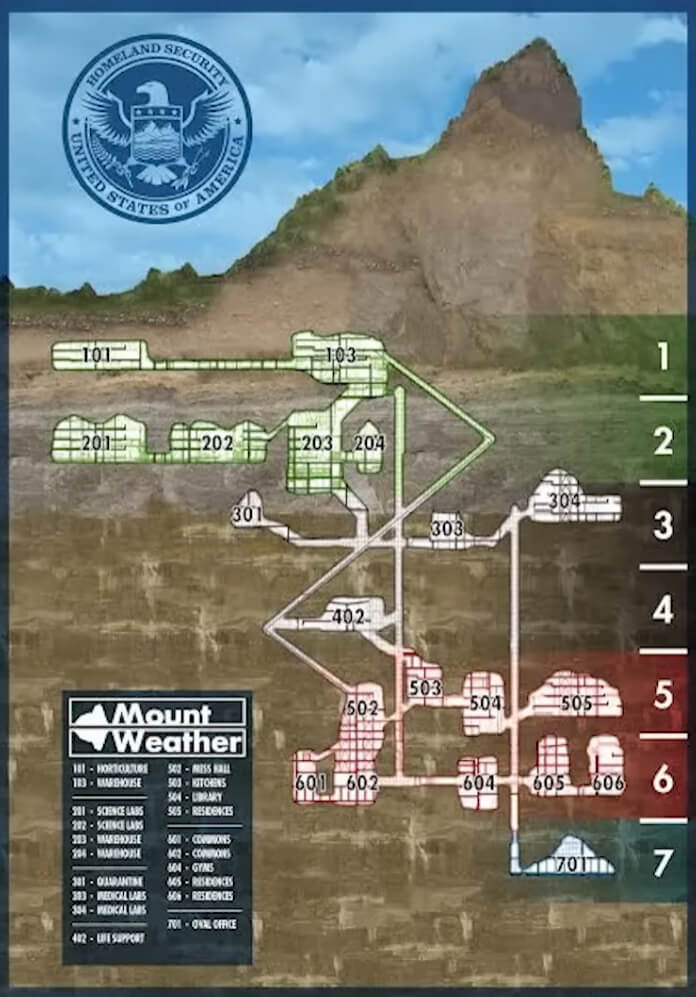
What’s compelling about these sites isn’t only their existence, although that is interesting in and of itself—but also the parallels to ancient legends. It feels like such a modern achievement, though the ancients seemed to have adopted this same idea through their own means. Whether it was repurposing an existing cave or using manpower to carve into rock, there are many examples of ancient civilizations that also thrived in the subterranea.
Ancient Knowledge Meets Modern Science
If civilizations thousands of years ago believed in vast underground worlds, and lived in others, and today’s governments have actively built massive underground cities, is it possible that they’re connected? Could our modern tunnel networks be tapping into something far older?
Consider this:
From the underground dwellings of Cappadocia, Turkey (such as Derinkuyu, which could house 20,000 people) to the rumored tunnels beneath Teotihuacan in Mexico, ancient peoples seemed to know something about subterranean living.
The Derinkuyu Underground City, located in Cappadocia, Turkey, is believed to have been constructed in stages, with its earliest tunnels possibly dating back to the 8th–7th centuries BCE. The Phrygians (an ancient Indo-European people) or the Hittites (c. 1600–1200 BCE) are often suggested as the earliest builders. However, it was later expanded and extensively used by early Christians during the Byzantine period (4th–10th centuries CE) as a refuge from Arab raids and other threats.
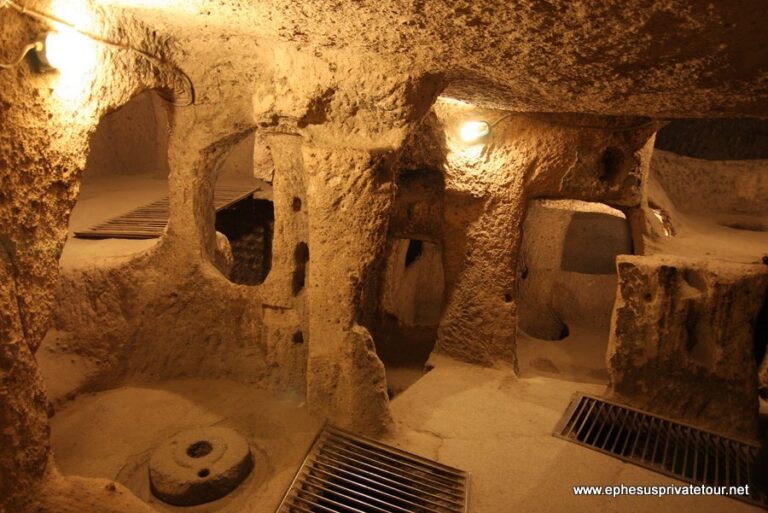
Derinkuyu is said to be connected to other underground cities, most notably Kaymaklı, which is about 5 miles (8 km) away. A series of long tunnels, some over 5 miles in length, are believed to connect these cities.
Cappadocia is home to over 200 underground settlements, and many of them likely had interconnecting tunnels, though some have collapsed or remain unexplored. These tunnels allowed people to move safely between cities without being exposed to threats on the surface, such as invaders or harsh weather conditions.
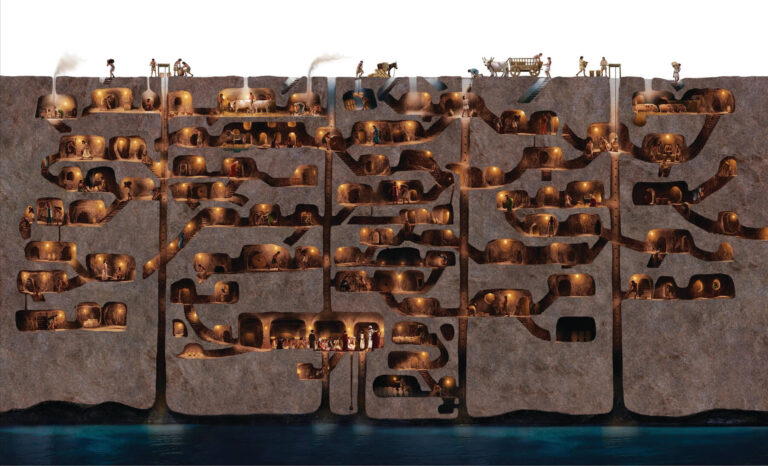
Who’s to say that these people some 3,000 years ago weren’t the first to construct Derinkuyu, and simply continued the work of a previous civilization? It may sound far fetched, but there are many more examples like this. Once it is established as more of a global pattern than an anomaly, it starts to really make me wonder and see if I can find any truth to it.
And so if governments have invested billions in underground facilities, and whistleblowers hint at entire civilizations below, is it really possible they could be hiding more than just standard military operations?
Throughout history, natural disasters, wars, and cataclysms have wiped out entire civilizations. But instead of being completely lost, could some of them have gone underground to survive?
Take the Derinkuyu underground city in Turkey mentioned earlier for example. This ancient, multi-level complex could house 20,000 people, had ventilation shafts, water systems, and defenses against intruders. The mainstream view tends to lean in favor that Derinkuyu was built as a temporary refuge, which doesn’t seem likely given the immense effort put into constructing it and the seeming ability for long term or even permanent residence. Aiming to not have history repeat itself, perhaps Governments are taking this proactive measure to be prepared for a civilization crumbling catastrophe.
Many Native American legends speak of a civilization inhabiting the Americas before their time, and for some time alongside them (maybe even still to this day), thriving in the underground. In Hopi Mythology, they are referred to as the “Ant People”. Cherokee folklore has the “Nunnehi” or “underground people”. They also speak of the Moon-Eyed People, a supposed race of small, pale-skinned people who lived underground or in caves in the Appalachian region before the Cherokee arrived. According to Cherokee legend, they couldn’t see well in daylight, so they only came out at night.
In Mohegan (Algonquian) tradition, the Makiawisug (Little People) live beneath the Earth in secret places. The Patupaiarehe of New Zealand (Māori, but similar to Native American lore), while not from North America, share similarities with Native American underground legends. They are pale-skinned, otherworldly people who live in caves and misty mountains, emerging only at night.
In Cree folklore, the Mannegishi are small, human-like beings with long, thin arms and large heads. They are said to live among rocks and in underground rivers, emerging only to play tricks on humans. Some variations describe them as builders of mysterious stone formations found in North America.
I could go on, but we have more to cover.
Tunneling Technology: Beyond What We’re Told?
Modern tunnel boring machines (TBMs) are already incredibly advanced, with nuclear-powered designs that can melt through rock at speeds that rival early subway construction. But are we seeing the full picture? The public is aware of the boring technology used in Elon Musk’s company, but what if classified military projects are using even more advanced technology than that?
Some of the most interesting reports include:
- Leaked patents from the 1970s describing nuclear-powered tunnel boring machines capable of drilling miles per day, turning rock into molten glass as they move. In 1972, the U.S. Atomic Energy Commission was granted a patent for a nuclear-powered tunneling machine designed to melt through rock, effectively creating tunnels while vitrifying the tunnel walls to provide structural integrity.
This concept, known as a “nuclear subterrene,” proposed using the intense heat generated by a compact nuclear reactor to liquefy rock, allowing the machine to advance and simultaneously form a glass-like lining. While the theoretical design suggested the capability to tunnel through solid rock, practical limitations, including energy requirements and safety concerns, prevented widespread implementation.
- Whistleblowers claiming that classified machines exist that are far more advanced than what’s publicly acknowledged.
- The idea that underground maglev trains—connecting deep underground bases—already exist, possibly explaining certain seismic anomalies in areas where there’s no known seismic activity. That’s a whole other story.
While mainstream sources focus on commercial tunnel projects like the Chunnel between England and France, the technology being used by military and intelligence agencies is likely decades ahead. If governments have had the capability to drill massive tunnels rapidly for decades, then imagine how extensive their underground networks could really be by now.
Shadow Government and the Continuity of Government (COG) Plan
It’s no secret that the U.S. has continuity of government (COG) plans, ensuring that the government keeps running in the event of war or disaster. But some researchers believe that these bunkers are more than just emergency shelters—they’re command centers for a hidden power structure. Quite literally, dare I say, a deep state. Again, this is just speculation.
- Mount Weather and Raven Rock: Officially FEMA emergency sites, but believed to house permanent operations beyond public oversight.
- The Underground Pentagon: Some sources suggest that the real Pentagon isn’t in Arlington, but deep underground, connected to other D.U.M.B.s (Deep Underground Military Bases).
The Secret Underground Transit System: Allegations persist that a high-speed underground rail network connects military bases, stretching coast-to-coast.
Final Thoughts: What Lies Beneath?
The deeper we go into ancient myths, underground cities, government bunkers, and classified technology, the more it seems like these elements are all connected with modern times and the distant past being not too different from each other in many ways.
- Ancient myths describe vast underground worlds—were these real places?
- Modern governments have built massive underground networks—are any built over or into any ancient sites? If so, accidentally or intentionally?
- Advanced tunnel boring technology is likely decades ahead of what’s public—how far has it really gone?
- COG programs hint at a hidden power structure—who’s really in charge underground, and how active are operations in all of those facilities?
Whether we’re looking at myths of Agartha, Patala, or Tartarus, or we’re questioning what’s really going on in places like Raven Rock and Cheyenne Mountain, one thing is clear: the world beneath our feet is far more mysterious than we’re commonly informed about. I hope that this intrigues you to dig deeper.
Want more? Check out this documentary by Steven Duncan and Andrew Wonder shot back in 2010, going into the old NYC Subway Station, and even further down to find the people living in the New York City underground today.

